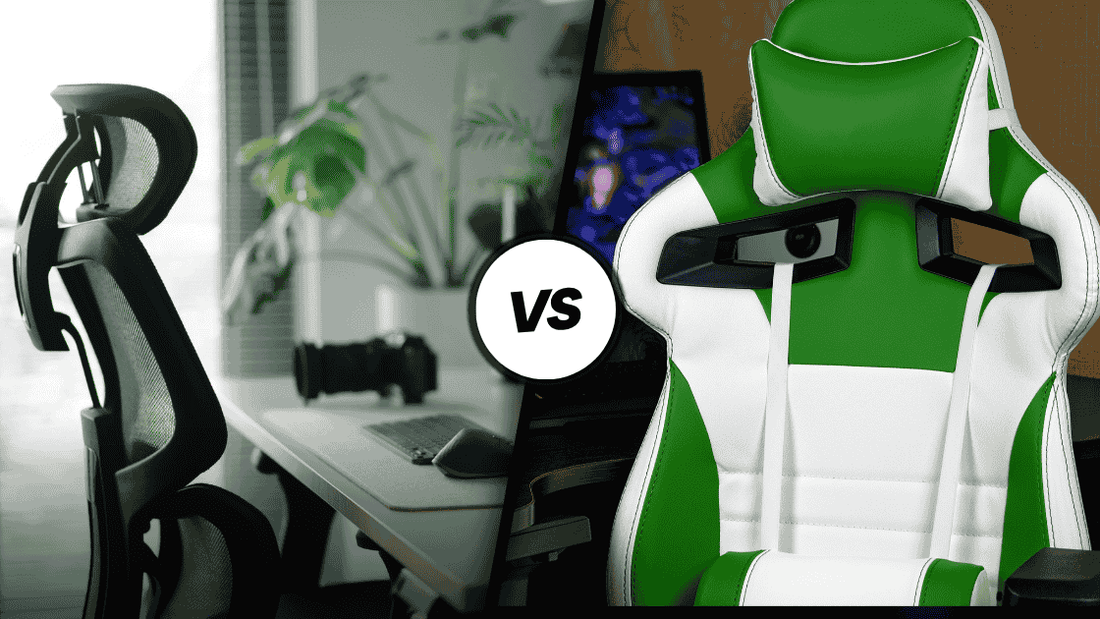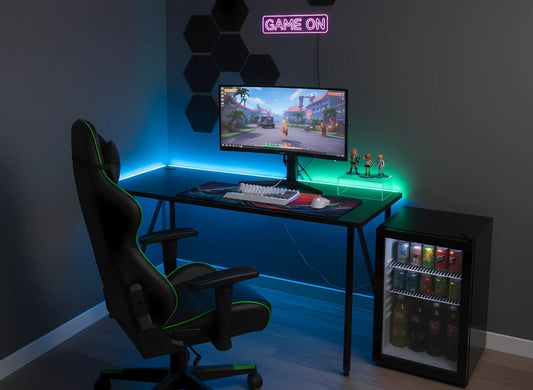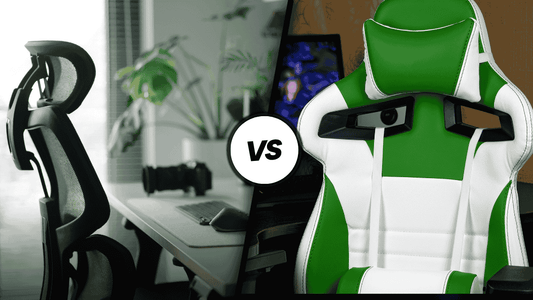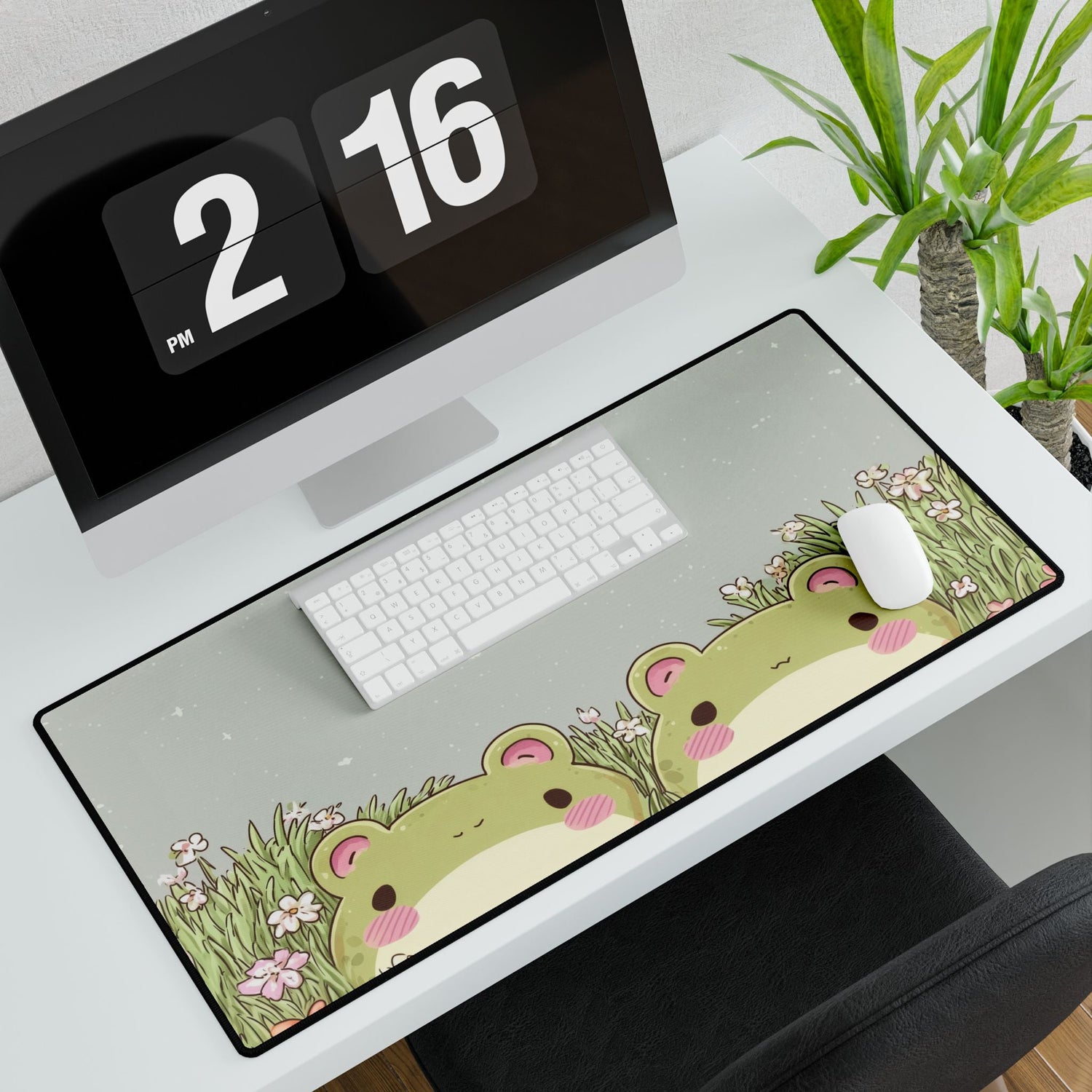Gaming Chair vs. Office Chair: Which One Should You Choose?

Share
Spending hours at your desk—whether it’s working on spreadsheets or getting lost in a game—can really take a toll on your body. That’s why the chair you choose matters so much. It’s not just about style; it directly affects your posture, comfort, and even your productivity.
One of the biggest debates out there is gaming chairs vs office chairs—which one is better for you? In this guide, I’ll break down the key differences so you can figure out which chair actually fits your lifestyle.
Gaming Chair vs Office Chair: Definition, Pros and Cons
Gaming chairs come from the world of esports and streaming, so they’re built with that vibe in mind. Think race-car seat design: high backrests, bucket-style seats, bold colors, and extras like removable lumbar and neck pillows. They often recline deeply (some almost flat), aiming to keep you comfortable during long gaming sessions while adding flair to your space.

Pros and Cons of Gaming Chairs
| Pros | Cons |
|
|
Office chairs, on the other hand, were designed with workplace ergonomics front and center. They usually look more understated—neutral colors, mesh or fabric materials, and built-in lumbar support. Instead of thick cushions, they focus on adjustable features like seat height, tilt, and breathable designs that keep you cool. Their main goal? Keeping your posture healthy during long hours at a desk.

Pros and Cons of Office Chairs
| Pros | Cons |
|
|
Design & Aesthetics: Style vs. Subtlety
A gaming chair is loud on purpose. You’ll see racing stripes, neon colors, and sometimes even built-in LEDs. If you’re building a streaming setup or just want your space to look as playful as it feels, that flair can be part of the fun.
Office chairs, on the other hand, lean toward clean lines and neutral colors. They’re made to blend in—whether that’s in a corporate office or a minimalist home workspace.
Comfort & Ergonomics: Support for Long Sessions
Comfort isn’t just about plush padding—it’s about keeping your body supported through long hours. Gaming chairs usually bring thick cushions and detachable pillows, which feel cozy at first but the bucket-style seats can sometimes lock you into one position and encourage slouching.
Office chairs are all about ergonomics. Think adjustable lumbar support, seat depth control, and breathable mesh backs. Many even carry ergonomic certifications, which makes them a safer bet if you’re logging eight-plus hours at your desk.
Adjustability & Features: Customising Your Fit
Both chair types adjust, but the priorities are different. Gaming chairs often include dramatic recline angles (sometimes a full 180°), footrests, pillows, and even built-in speakers. They’re made for immersion and relaxation.
Office chairs focus on precise adjustments: lumbar depth, seat height, armrest pivot, tilt tension. These subtle tweaks matter when you’re aligning your chair with your desk, keyboard, and monitor.
Price & Value: Getting the Most for Your Money
Both options span a wide range. Budget gaming chairs often sit under $200 but can lack durability and true ergonomic design. Premium models push past $500 with extras like memory foam or RGB lighting.
Office chairs start near $100 for basics and can easily pass $1,000 for top-tier ergonomic brands. They may not look as flashy, but they tend to deliver better long-term comfort and value. Think of it like buying a mattress—you use it every day, so the right one pays for itself.
TL;DR: Gaming Chair vs Office Chair
- Gaming chairs: Bold designs, deep recline, extra flair (RGB, pillows, footrests). Best if you stream, game casually, or want a flashy setup.
- Office chairs: Neutral looks, ergonomic support, precise adjustments. Best for remote work, studying, or long daily sessions.
- Hybrid users: Go for an ergonomic office chair and add personality with accessories like an anime desk mat or cat desk mat.
If you care more about style and immersion, pick a gaming chair. If you need comfort and long-term support, go with an office chair. Either way, the right desk mat and a well-curated workspace will make your setup shine.







